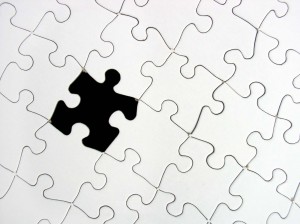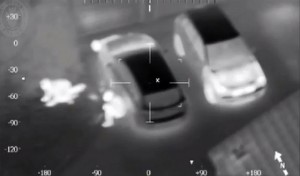For those who own alarm systems, whether they are video surveillance, access control, burglary, or fire protection, our systems watch over us and protect us around the clock.
But in today’s day and age, just about everything is connected to the internet. In many cases, this includes our alarm system. And like any device that is connected to the internet, if not taken care of properly, it can be at risk of attack from hackers. With the upcoming launch of 5G, it is extremely important this year to protect anything connected to your home network.
“Attackers used an army of hijacked security cameras and video recorders to launch several massive internet attacks” said a news piece by the Wall Street Journal. Many times, these cameras were infected by pre-compromised routers that already existed.
Here are some tips about how to protect your alarm system as well
Router security: We recommend using WPA2 security for your router. Most routers, unless they are fairly old, are capable of this type of security. For more information on this, check out your router’s brand’s website – Belkin, Linksys, and Netgear are common brands.
Firmware updates: It is very important that any device that connects to the internet, from thermostats to alarm systems to routers to televisions to computers, always has the most up to date firmware. Each device’s manual or website will have instructions on how to do those, and if there is a phone application that interfaces with the device, you can often do it through the application.
Password protection: Many devices come with generic user names and passwords. These are easy targets for hackers. Make sure you change any default passwords, and try not to use the same password on multiple devices. It is most important that this is done on the router.
New hardware: According to Kenneth White, a security researcher and director of the Open Crypto Audit Project, “If the company that made your [device] isn’t selling that model anymore or offering security updates, that’s a good sign for you to throw it in the trash.”


 The images above show the difference between a parking garage being monitored by a camera with no WDR or WDR turned off on the left, and on the right the same area monitored by a camera with WDR enabled. The difference is clear as day. Why do they differ so much? The camera with the WDR enabled has two internal Charge-Coupled Devices (CCD). The two devices, or sensors, scan an image at different speeds, one low and one high, the image processor then combines the separate images producing a clearer, more balanced picture with better contrast and lighting. This process happens quickly enough to produce a stream of clear recorded footage. There are many different manufacturers that produce these WDR cameras in the market today, and not all of them use the same type of sensor and image processing combinations. The best way to ensure you are getting the best camera for your specific application is to hire a licensed security systems integrator who is educated in which camera specifications will work best in variant conditions.
The images above show the difference between a parking garage being monitored by a camera with no WDR or WDR turned off on the left, and on the right the same area monitored by a camera with WDR enabled. The difference is clear as day. Why do they differ so much? The camera with the WDR enabled has two internal Charge-Coupled Devices (CCD). The two devices, or sensors, scan an image at different speeds, one low and one high, the image processor then combines the separate images producing a clearer, more balanced picture with better contrast and lighting. This process happens quickly enough to produce a stream of clear recorded footage. There are many different manufacturers that produce these WDR cameras in the market today, and not all of them use the same type of sensor and image processing combinations. The best way to ensure you are getting the best camera for your specific application is to hire a licensed security systems integrator who is educated in which camera specifications will work best in variant conditions.
 stem can be one of the best ways to protect your business from unpredictable threats like fires and burglars. Did you know that not all systems are the same? That’s right there really isn’t a “one size fits all” solution when it comes to securing your workplace, nor should there be. Why? Because no two businesses are exactly the same. Therefore, doesn’t it make sense that a security system should be custom and tailored to a facility’s individual needs? A healthcare facility wouldn’t have all the same security needs as a retail store, right? Right. So how do you go about finding the right system for your business? Your best option is to hire a licensed professional in the security system field who has extensive knowledge and experience. At
stem can be one of the best ways to protect your business from unpredictable threats like fires and burglars. Did you know that not all systems are the same? That’s right there really isn’t a “one size fits all” solution when it comes to securing your workplace, nor should there be. Why? Because no two businesses are exactly the same. Therefore, doesn’t it make sense that a security system should be custom and tailored to a facility’s individual needs? A healthcare facility wouldn’t have all the same security needs as a retail store, right? Right. So how do you go about finding the right system for your business? Your best option is to hire a licensed professional in the security system field who has extensive knowledge and experience. At  If you have a security system you might already understand the consequences of a false alarm. It is not something to be taken lightly and can have serious implications. False alarms can happen for any number of reasons and it’s important to understand why and how best to avoid them. No security system is perfect, and false alarms are bound to happen, but as end users and integrators it is our duty to try to minimize them. At
If you have a security system you might already understand the consequences of a false alarm. It is not something to be taken lightly and can have serious implications. False alarms can happen for any number of reasons and it’s important to understand why and how best to avoid them. No security system is perfect, and false alarms are bound to happen, but as end users and integrators it is our duty to try to minimize them. At  Not all surveillance cameras are created equally. It may seem as simple as selecting a surveillance camera and popping it into place, but what about the external factors that affect the quality of recorded images? One of the top concerns for industry professionals and end-users alike is a cameras ability to function in the dark or varied light conditions. Whether you’re using interior or external cameras, their ability to function under varied light conditions is paramount. Our experts at
Not all surveillance cameras are created equally. It may seem as simple as selecting a surveillance camera and popping it into place, but what about the external factors that affect the quality of recorded images? One of the top concerns for industry professionals and end-users alike is a cameras ability to function in the dark or varied light conditions. Whether you’re using interior or external cameras, their ability to function under varied light conditions is paramount. Our experts at 
